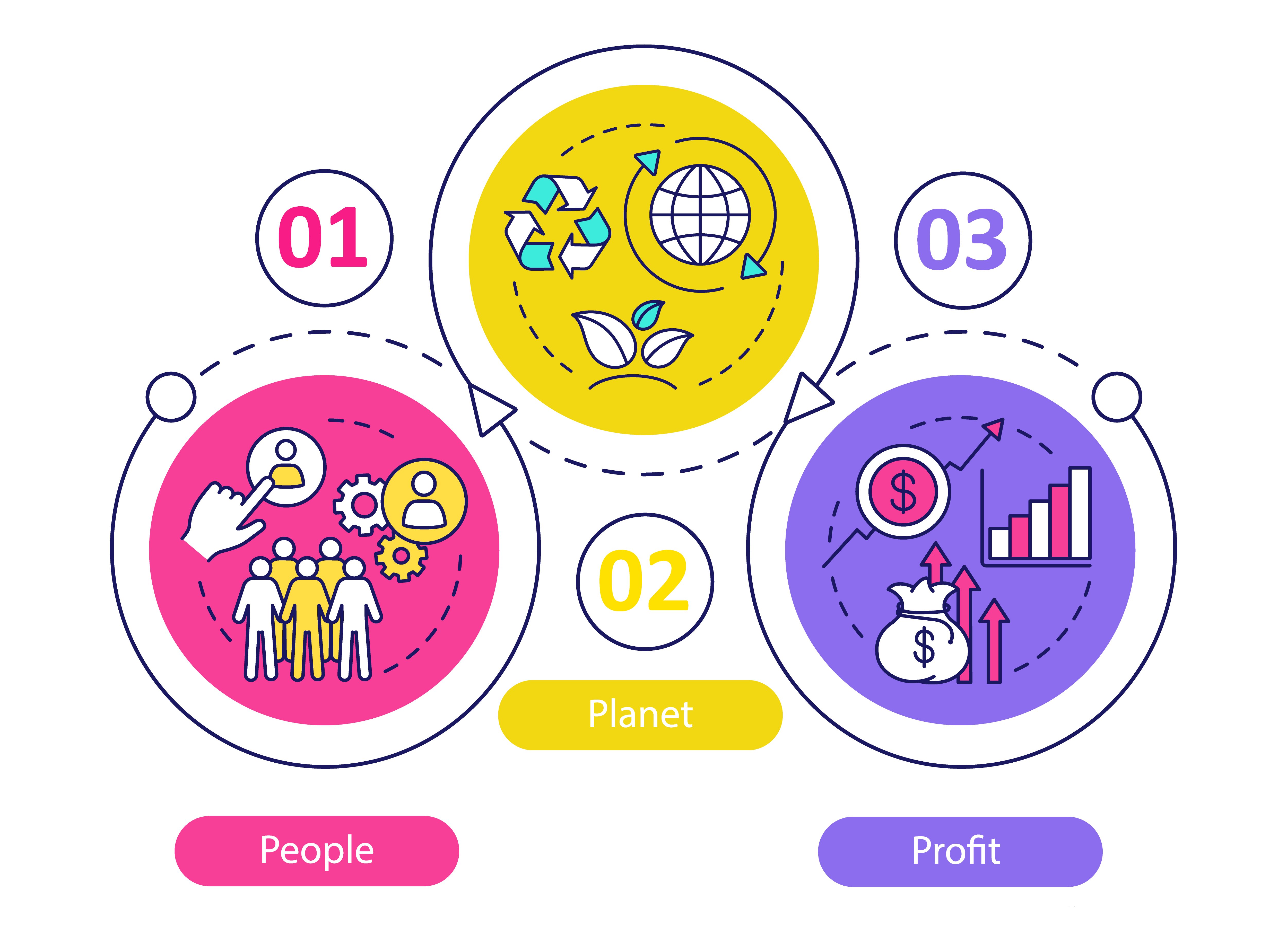Marketing and Sustainability: A Look Into Music Festivals
September 21, 2022 at 4:58 PM

What is Sustainable Marketing?
Marketing is everywhere — As consumers, we may be accustomed to being a constantly targeted audience by marketers and advertisers. Everything around us is strategically marketed toward us, and everything we buy impacts us. With increased knowledge from consumers and new concerns, marketers are changing how they push products to the public. One issue that's important to notice is the environmental impact of our buying habits. There is an increasing demand for resources and ecosystem services. The problem lies in the realization that there is a decline in these services, resulting in impacts we are already seeing today.
With this shift, there is becoming an increase in sustainable marketing efforts to protect the environment. But what is sustainability? It can be hard to gauge what is sustainable and what is just greenwashing. Greenwashing is just a way that companies try to convey that they have sustainable products when, in fact, they are not sustainable at all. Vague wording and green-colored packaging are two easy ways to spot companies doing this. To avoid this trap, a consumer must understand what sustainability truly is. Sustainable development was given a clearer definition in 1987 as a way to meet the needs of the present without compromising the ability of future generations to meet their own needs. More specifically, we can look at the triple bottom line of sustainability (TBL). TBL is a way that businesses can market their products that genuinely represent sustainability, including people (social issues), planet (environmental issues), and prosperity (economic issues). The TBL for businesses can be further looked at as ways to drive growth, including investing in communities and more reliable access, long-term share values, attracting capital, addressing risk, and stating a clear and direct purpose.
Many companies are using TBL to fulfill their sustainability goals to market to consumers more authentically. An exciting place that we have seen TBL used more is in music festivals to improve sustainability at events. If you are no stranger to music festivals, you know firsthand how they significantly impact their surrounding environment. Their impact is not only in a literal environmental aspect but also in an economic and social aspect. The amount of waste produced by the venues, vendors, artists, and attendees can rack up alarmingly fast.

Music Festivals — How Do They Market? Are They Sustainable?
Sustainability in marketing festivals can be problematic. Since it is more than just environmental concerns, the impact can fall onto more than just the event itself. To fully understand, we have to look at attendees, vending, and the business practices of companies sponsoring the event. Even the performers create an impact, especially when headlining acts take private jets to play at festivals; they make an even larger carbon footprint for the festival overall. Event coordinators face issues with the availability of sustainable supplies, lack of support from stakeholders and finance, lack of control over venues, and especially lack of time.
One example of a festival with a major impact is Coachella. Located in southern California, the music and arts festival has claimed to be a leader in sustainability and continues to market itself in that way. Coachella reported generating more than 27,000 tons of C02 from transportation, power generation, and art installations at the festival alone (about the same weight as the Statue of Liberty). Attendees also account for approximately 65% of the on-site C02. The festival creates 1,600 tons of solid waste annually, and only 20% of the waste created at the event is reportedly recycled.[1]
In most cases, companies send waste to landfills since it is cheaper than recycling or using one-use plastics to keep costs down. This is certainly something that we can see at Coachella. Most festivals are coordinated for profit, so cutting production and post-production costs benefits them and their stakeholders. Sustainability is then viewed as a distant afterthought, promoting initiatives after the event or voicing for social change and not matching that sentiment with physical actions. It also creates a lasting impact on the environment directly around it. Not only with waste but with the music itself. Volumes can reach over 110 decibels. This noise pollution directly affects wildlife, creating an even more detrimental and complex impact on the environment overall.
Another example is Lollapalooza. A festival much closer to home, Lollapalooza is doing a fair job at sustainability and marketing. The Chicago festival reported that 39% of waste was diverted from landfills with the help of fans, volunteers, and staff. The production created about 1,200 tons of C02 emissions that were offset, and roughly 830,000 bottles were refilled at hydration stations around the festival.[2] The festival has also ensured the event's long-lasting popularity, which directly benefits the surrounding communities with increased revenue in the hospitality industry during the festival. Volunteers at the event encouraged advocacy for social and political change, even encouraging donations for nonprofits in the community. Access to public transportation encouraged pro-environmental management practices. Although these are all positive efforts toward sustainability, there is still plenty of work to be done.

What's Next?
Sustainability reporting done yearly is a critical measurement. It helps others recognize their impacts and how these festivals change and adapt over time. It allows the public to hold the events accountable for their environmental impacts. The first step to positive change is carbon offset, renewable energy, and zero-emission goals. Most festivals are taking on these challenges and want to help lead and spread awareness to others.
With an increasing concern from the public, there has never been a more critical time for large corporations to take action and make changes for the better. Striving to reduce our footprints will not only help these events in the long run but the planet as well, and who wouldn't want that? So, if you are heading to a festival this year, make sure to do what you can to help the planet and those around you so we can continue to enjoy music festivals for many more years to come.
[1] Gray, J. (2021, October 23). Covid put music festivals on hold. climate change might offer bigger long-term problems. Retrieved August 10, 2022, from https://www.washingtonpost.com/lifestyle/style/covid-put-music-festivals-on-hold-climate-change-might-offer-bigger-long-term-problems/2021/10/21/f7863736-2c4f-11ec-985d-3150f7e106b2_story.html
[2] Lollapalooza. (2019, August 3). Sustainability. Retrieved August 10, 2022, from https://www.lollapalooza.com/sustainability#:~:text=205.43%20tons%20of%20trash%20diverted,of%20fans%2C%20volunteers%2C%20and%20staff
Comments
Questions or comments? Join the conversation!